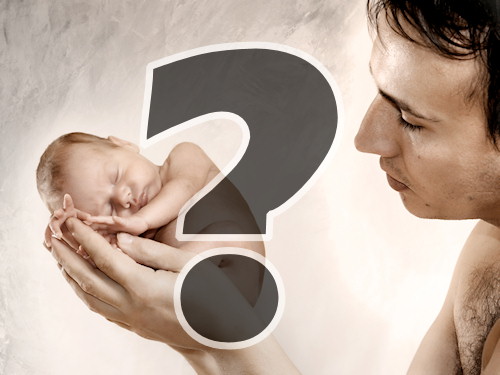You have probably seen the pictures. The little arms and legs torn off, the little feet of the aborted babies. The pictures have been plastered on trucks, held above overpasses, shared on facebook and other websites, and even towed over beaches by a plane.
They are some of the most powerful tools of the pro-life movement.
But there is still one nagging question. What about abortions that take place before the baby looks human? Is it still morally wrong to kill “it” when it only vaguely resembles a person? What about the very early stages when it is indistinguishable to the naked eye from the embryos of other creatures?
In an article I wrote in June of 2013, I cited statistics that showed that two thirds of abortions take place after the baby has human features. But one third, a significant number, do not. Are these abortions wrong too?
Is abortion wrong because it “looks ugly” or because an embryo is a developing human being, and it’s wrong to kill it?
The question this breaks down to is this: are we inherently valuable because we are human, or are there certain qualities (like appearance) that make some of us more valuable than others?
Life begins at conception.
This is not religion or philosophy. It is scientific fact. A newly conceived human is no longer a part of a whole. It has DNA that is human and unique from both the mother and the father. It is a growing organism inside the woman’s body. It can even be alive outside the woman’s body- as an embryo growing in a lab. No one would claim that an embryo in a test tube is part of the test tube, so why claim that a fetus inside a woman is part of the woman?
Under normal circumstances, this tiny life will grow into an embryo, a fetus, a baby, a toddler, a child, an adolescent, a teenager, then an adult. Each is a stage of life, not the creation of life itself.
We know that a newly conceived human is a unique individual. It is alive, not dead. It is human, not a cat or other animal.
The question then is this: does this entity have a right to life? Does it, as a member of the species homo sapiens, have value and worth? Are we worth something just because we are individuals, members of the human species?
Or is our worth dependent on some characteristic we have?
This is an important question. On one hand, we have an unconditional acceptance of all human beings. On the other, we have acceptance based on external qualities, which are determined by the society we live in.
So…if we do not have inherent worth by being human, if a living human embryo does not have worth simply by being alive and human, what yardstick do we use to calculate worth?
Well, there are many ways we could do it.
We could say, you are not human until you reach a certain age. So what age? A fetus? A baby? A child? Some philosophers like Peter Singer say that it is ethical to kill newborns because they are not ‘people’ yet. Some societies, like the Spartans, felt that infanticide was perfectly acceptable. And partial-birth abortion and live birth abortions blur the line between abortion and infanticide already.
Is our worth dependent on what we look like? Whether we are human looking or not? Where we are located, as in within the womb or outside of it? Is it based on what we can do? What degree of awareness we have?
You can impose a set of credentials for a human life to be considered worthy of protection, and give rights based on an external characteristic. You can impose guidelines on who is a person and who is not.
But be very, very careful when you do. Because that way lies madness.
Each society can impose their own yardstick, as can each individual. But ultimately, each yardstick is arbitrary. What will the measure of human worth be, if it not his or her inherent membership in the human race?
Different societies have answered this in different ways.
In America in the 1800s, a slave was not considered a person. Oh yes, intellectually, everyone knew that a slave was a biological member of the human race – but that wasn’t enough. Instead of having inherent worth, a slave was denied rights. He could be beaten, bought and sold, put to work, and even killed by his owner (this was technically illegal but most law enforcement officers looked the other way). An owner could easily get away with killing his slave, and even with sexually violating her.
In the Bill of Rights, the slave was declared three-fifths of a person. This was for calculation of population. Because obviously, a slave couldn’t be a person. If that were true, an entire ideology would collapse. Ultimately, a slave had no inherent worth. Factors of race and skin color prevented him from being considered a person. Were these factors any more legitimate than age and location?
Let’s consider another example. In some societies, such as Greek Sparta, handicapped people were not considered fully human. In Hitler’s Germany, handicapped people, especially the mentally handicapped, were dubbed ‘useless eaters.’ Useless, because they were useless to the state. They were unable to make serious contributions to the economy and, in the mind of the Nazis, simply ate up resources.
In fact, Hitler exterminated thousands of the mentally and physically ‘unfit’ before even turning on the Jewish people. Mentally ill or developmentally disabled were not considered human because their brain function did not meet the criteria Hitler established. Sound familiar? An echo of those who claim that a fetus or baby does not have sufficient brain function to be human? Maybe.
But the point is, Hitler’s definition of what makes us human and worthy of rights paved the way for the deaths of millions, including Jews, Gypsies, and the Germany’s own disabled war veterans.
What about twins? In the past, in some tribal villages, twins were considered inherently evil. They were abandoned to die at birth. It was an accepted norm.
In our society, we wouldn’t deny living humans rights based on their physical and mental abilities, their race, or their birth circumstances.
Instead, we deny living humans rights based on their size, appearance, degree of development, and location inside their mother’s womb.
That is our nation’s criteria for being a person, for being a human being. Is it any less arbitrary than race, capabilities, or circumstances of birth? When we impose our own cultural measures of who has rights and who doesn’t, are we any better than any other society that does the same thing?
We cannot get away from the fundamental question. I ask the reader. Are you a valuable human being? Are you worthy of life and rights? If so, why? Is it because of your age? Your appearance? Your size? Your intelligence? Your success in life? The amount of money you have? Your race? Your gender? Your capabilities?
Or is it because you are a human being?
If you have inherent worth because simply because you are a living human and not because of external characteristics, then what of an unborn baby? Can you grant him or her the same consideration you grant yourself? Or do you use the yardstick of size, dependency, or location?
How big? Is a 250 pound football player more of a person than a petite 5’1 110 pound woman? How developed? Is an adult more of a person than a teenager? What about location? Does a man become a person by walking two feet? If not, than why does a fetus become a person by traveling a few inches further down the birth canal?
When we look at our arbitrary distinctions that way, they seem illogical. Yet we apply them unfairly.
Abortion is wrong for the same reasons as slavery, infanticide, involuntary euthanasia and other human rights violations are wrong- because it victimizes a human being with inherent worth.







